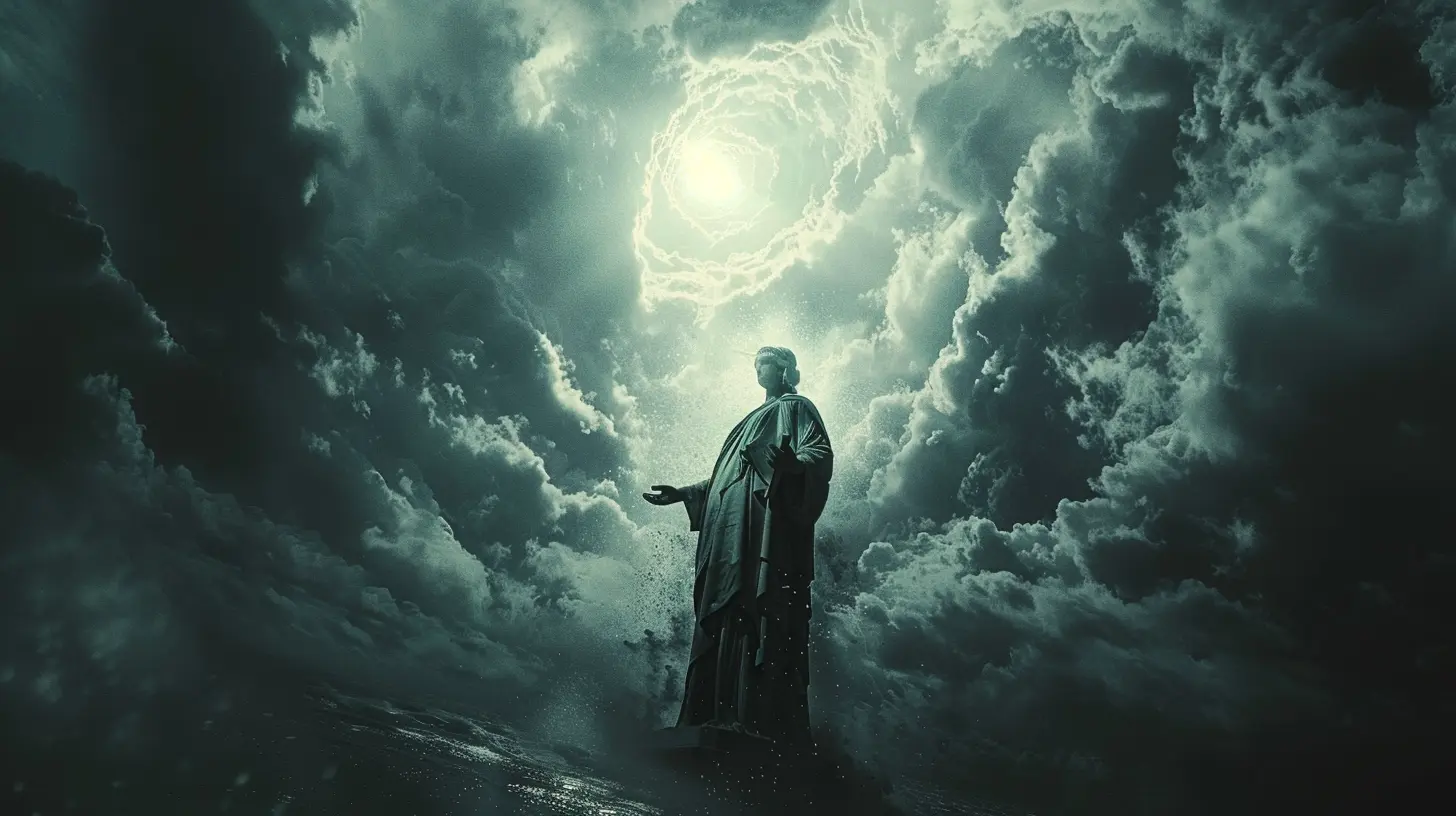The Inspiring Story of New York’s Statue of Liberty
24 September 2025
The Statue of Liberty. It's more than just a massive green lady holding a torch on an island. It’s a symbol, a legend, a gift—quite literally—and a beacon for millions who saw her as the gateway to a better life. We've all seen her in movies, on postcards, and maybe even in person. But how much do you actually know about her story?
Let’s dive into the real, gritty, and surprisingly inspiring journey of how the Statue of Liberty became the icon she is today. And trust me, it’s not just about copper and construction—it’s about ideals, struggles, and the enduring human spirit.
A Gift Wrapped in Symbolism
Let’s clear something up right away: Lady Liberty wasn’t originally American. She was born out of the minds and hands of the French. Yep, she was a gift from France to the United States—but not just to say “hey, we like you.” It was way deeper than that.Why Did France Even Gift the Statue?
Back in the 19th century, the U.S. and France were pretty tight politically. Both had revolutions, both fought for freedom, and both were talking a big game about democracy. So in the 1860s, a French intellectual named Édouard René de Laboulaye suggested giving the U.S. a statue to celebrate their shared love for liberty.Seems simple, right? But in truth, it was partly to give France a little push toward democracy too. Laboulaye hoped this grand gesture would inspire the French people to pursue more democratic values in their own country. A little statue diplomacy, if you will.
Building Liberty: A Gigantic Undertaking
So how do you go from a nice idea over wine and cheese to a 305-foot-tall copper statue standing on its own island? That’s where sculptor Frédéric Auguste Bartholdi comes in. This guy had vision—big vision.The Construction Struggles
Bartholdi didn’t just sketch out a statue over the weekend and call it a day. This was a serious project, and it took years. The internal support? That's where Gustave Eiffel entered the scene (yep, the same genius behind the Eiffel Tower). He designed the internal iron framework that would hold up the shell of copper sheets.Not to mention, this entire statue had to be constructed in France, then dismantled, shipped in over 300 pieces across the Atlantic, and reconstructed on what we now call Liberty Island. Imagine assembling IKEA furniture the size of a skyscraper… without GPS or YouTube tutorials.
The American Side of the Deal
Here’s the kicker: France agreed to handle the statue, but the U.S. was supposed to build the pedestal. And guess what? America dropped the ball at first. Funding the pedestal turned into a massive struggle. People weren’t convinced they needed to support a statue.But Joseph Pulitzer (yes, that Pulitzer) used his newspaper, The New York World, to rally the American people. He published the names of every single donor, no matter how small their contribution. It worked—over 100,000 people donated, many of them chipping in less than a dollar. Talk about crowd-funding before it was cool.
Arrival and Unveiling: A Star is Born
On June 17, 1885, the statue arrived in New York Harbor, packed in 214 crates like a giant jigsaw puzzle. Over the next year, workers pieced her together, and on October 28, 1886, she was officially unveiled.President Grover Cleveland accepted the statue on behalf of the U.S., calling her a "mighty woman with a torch." Fireworks lit up the sky, and countless boats buzzed around Liberty Island. It was a celebration of freedom, unity, and a shared dream.
But the most moving part? Immigrants arriving at Ellis Island, gazing at her from the decks of their ships. For many, she was the first thing they saw—a silent reassurance that they had made it to a land of opportunity.
What Does Liberty Actually Represent?
Let’s dig into the symbolism here, because the details are loaded with meaning if you know where to look.Torch and Tablet
Her torch? It lights the way toward freedom. The tablet in her left hand? It reads “JULY IV MDCCLXXVI” — that’s July 4, 1776, the date of the U.S. Declaration of Independence. It’s kind of like her way of holding a birth certificate for American liberty.Broken Chains at Her Feet
This one’s easy to miss, but it’s powerful. At her feet lie broken shackles and chains. She’s literally stepping over oppression. That imagery hits hard, especially when you connect it to the abolition of slavery just a couple decades earlier.Her Gaze
Have you noticed she’s not looking at you? Her gaze is elsewhere, up and out toward the sea. She’s looking to the future, symbolizing aspiration, hope, and progress. It’s the kind of subtle touch that gives her real character.The Color That Wasn’t Always Green
Let’s talk aesthetics for a second. Most people see the Statue of Liberty and think she was always that beautiful seafoam green color. But nope—she started off as shiny brown copper.Over the years, her copper skin underwent oxidation (a fancy word for weathering), forming a green patina. That layer actually protects her from further deterioration. So yeah, what many consider her iconic look is just good ol’ nature doing its thing.
Lady Liberty Through the Years
Since her debut, Lady Liberty’s been through a lot. World Wars, political protests, weather damage—you name it. But somehow, she’s always stood tall (literally and metaphorically).World Wars and Beyond
During World War I and II, Liberty became a symbol of American resolve. Soldiers saw her as a reminder of what they were fighting for—freedom, justice, and democracy. She even showed up on war bonds and recruitment posters.In the 1980s, her centennial celebration sparked a major restoration. Cracks in her torch arm were repaired, her pedestal was reinforced, and she got a general glow-up to welcome another century of visitors.
A Magnet for Movements
From Civil Rights to Women’s Rights, the Statue of Liberty has been used by activists as a powerful symbol. She’s been dressed up, projected on, and even climbed by protestors wanting to make a point. And why not? What better place to make a stand for freedom than at the feet of Liberty herself?Visiting the Statue Today: A Must-Do Bucket List Item
If you’re planning a trip to New York City, skipping the Statue of Liberty would be like going to Paris and ignoring the Eiffel Tower. Don’t do it.What You’ll Experience
You can take a ferry from Battery Park in Manhattan (or Liberty State Park in New Jersey). The ride itself offers killer views of NYC’s skyline. Once on Liberty Island, you can walk around the base, visit the museum, or, if you plan ahead and book early, climb up to the crown.Not gonna lie—the crown climb isn’t for everyone. It’s tight, steep, and a bit claustrophobic. But the view? Absolutely worth it.
More Than Just a Statue
So here’s the deal: the Statue of Liberty isn’t just some tourist trap with gift shops and long lines. She’s history, she’s ideology, and she’s emotion all wrapped into a colossal copper figure.She stands for what we want to be—free, bold, and welcoming. She reminds us of where we came from and challenges us to keep building a better future. In a world that sometimes feels divided and chaotic, Lady Liberty stands firm, shoulders back, torch high, lighting the way.
Final Thoughts: What Liberty Means Today
Lady Liberty may be more than 130 years old, but her message is timeless. Every crack, every oxidized inch, tells a story—not just of her creation but of the people she represents.She’s not perfect. Just like the country she stands for, she’s always a work in progress. Maybe that’s the most inspiring part of her story.
So next time you see that image of a tall, green lady holding a torch, don’t just think “Oh, it’s the Statue of Liberty.” Think about what she’s been through, what she stands for, and why she still matters.
Because in the end, liberty isn’t just a statue—it’s a daily choice.
all images in this post were generated using AI tools
Category:
Must See LandmarksAuthor:

Winona Newman
Discussion
rate this article
1 comments
Elias Mullen
Great article! The Statue of Liberty truly inspires us all.
September 28, 2025 at 2:44 AM

Winona Newman
Thank you! I'm glad you found it inspiring!


